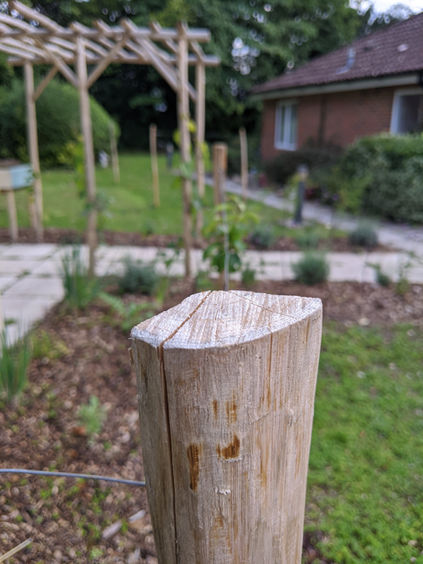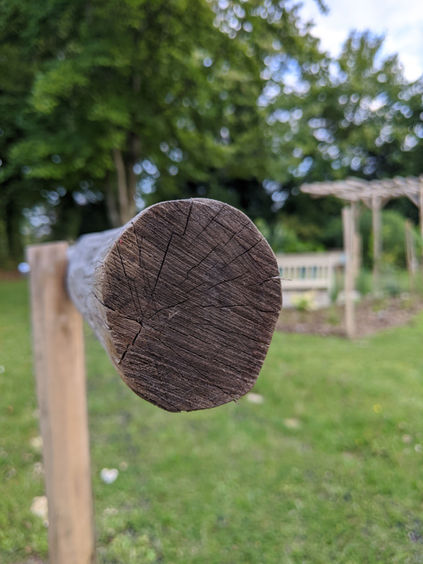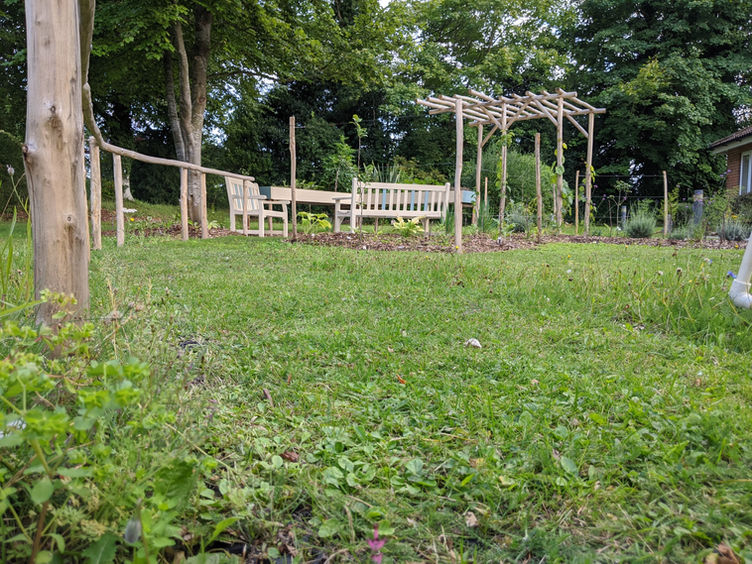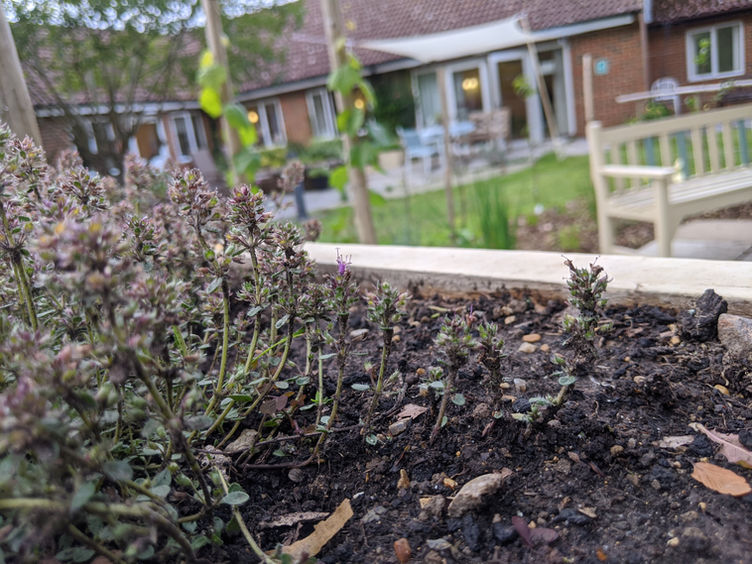Residential Care Home, Hungerford
There is a need for year-round interest from both within the garden and looking on from one of the many windows that overlook it. This is achieved by training fruit trees to directing the eye toward certain features including the Sweet Chestnut pergola and existing mature Beech trees.
The main features of this garden include a dramatic pergola, complete with four different varieties of Grape Vines ascending the posts. The pergola is made from Sweet Chestnut wood, a super rot-resistant hardwood from a local sustainable coppice woodland.
Three reclaimed timber raised beds are built with space underneath such that they are suitable for both wheelchair and standing access. Planted within the beds are three patches of different, carpeting low-growing scented plants that when touched release a scent, including a Causican Mint, Creeping Thyme and Chamomile. Apart from these plants the beds are un-planted, offering a designated and manageable zone for the staff and residents to plant annual veg and bedding plants in.
The garden now consists of a circular path, this was created in a low-cost way by installing a reinforced grass path. Encircled by a tactile hardwood handrail, the path is zimmer-frame and wheelchair friendly, and also provides a safer CFH (critical fall height) than traditional, more expensive path options. The grass grows through the matting, allowing for year-round use, and the sensation of being amongst grass, but safely. They also increase the 'green to grey ratio' - grey being hard landscaped areas such as patios. Having a high green to grey ratio plays an important role in the healing nature of outdoor spaces.
The shade sail, winged by two herb gardens placed for their potential for sensory stimulation, shelters the seating area directly outside the doors from the sun. This provides a safe stimulating space where it is most convenient and accessible. Given the southerly aspect of the garden, the sail canopy also reduces the passive solar gain inside the home during the summer months, keeping it cooler inside.
To add privacy and screen areas off there are dwarfing fruit trees trained in an espalier-style form. All the planting is low maintenance, non-toxic and mainly consists of edible perennial plants with the exception of a couple of varieties, chosen for their value as cut flowers, to be brought into the home so that those who are inside can gain value from the garden.
Part of the low-maintenance design is provided by spreading an locally sourced organic mulch over the flower beds which improves the soil and retains moisture - thus reducing the need for watering and reduces weeds.





















